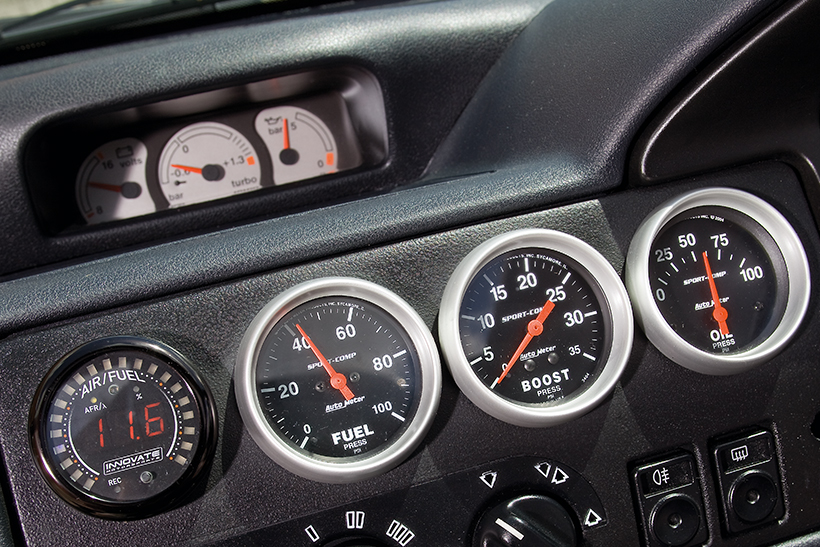Let’s be honest, how many of us buy gauges purely because they light up at night and make the inside of our cars look cool? And how many of us have gauges in our cars that we barely look at?
The fact is, gauges actually play an incredibly important role in the longevity and wellbeing of your engine. Here we investigate the range of options on the market that you might want to consider and explain why you should be taking notice of them…
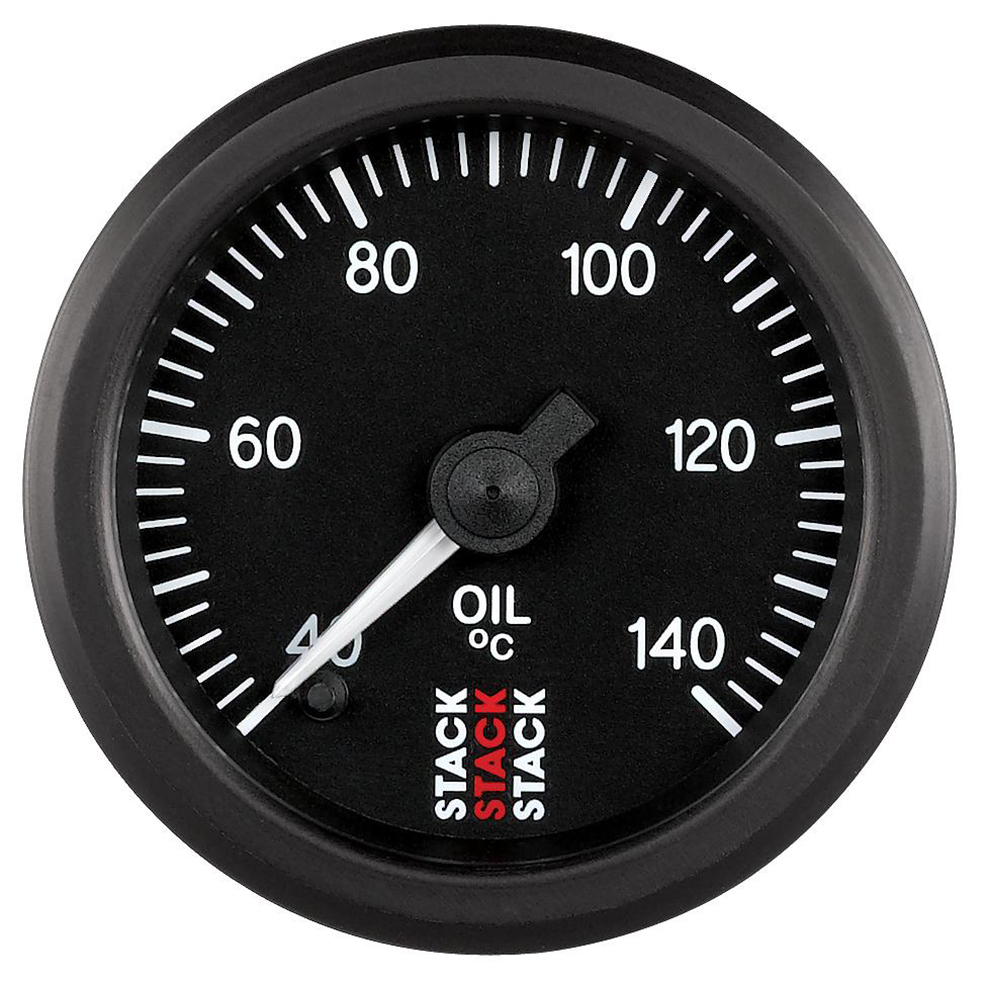
1. Oil temperature gauge
Oil temp gauges find their way into the majority of stock performance cars, but if yours hasn’t got one then it should be high on your list of priorities. Whether your motor is road or track based, oil temperature is something you want to be aware of, and not just to avoid excess temperatures – oil must also reach a sufficient temperature (normally 90°C) before you put the boot down.
Why do I need an oil temperature gauge?
If the oil temperature gets too high and the oil breaks down, the protection it offers will be reduced. An oil temperature gauge lets you check when you’ve reached the safe thermal limit of your oil.
What to look for:
The safe operating temperature of your oil varies depending on the grade. However, we don’t recommend you see oil temperatures in excess of 130°C for a prolonged period of time. High oil temps will result in lower than normal oil pressure, which isn’t something you want to have.

2. Oil Pressure gauge
A lot of vehicle manufacturers fit these as standard to performance vehicles as this is one of the most important areas to monitor. But if you don’t have one, get one!
Why do I need an oil pressure gauge?
Oil is the life-blood of your engine, it needs to move around at suitable pressure to ensure everything is lubricated correctly, and it requires pressure to do so. This gauge monitors that pressure.
What to look for:
Every engine will make different oil pressure, but the following points should always apply: oil pressure should be high on start-up from cold as the oil is thicker when cold. As it warms up, pressure should drop. When the engine speed is raised, the oil pressure should rise as well, because the oil pump speed is normally directly related to crankshaft speed.
Familiarise yourself with ‘normal’ readings on your engine and look for abnormalities. Worst case scenario, if oil pressure falls to zero, shut the engine down to avoid causing terminal damage.
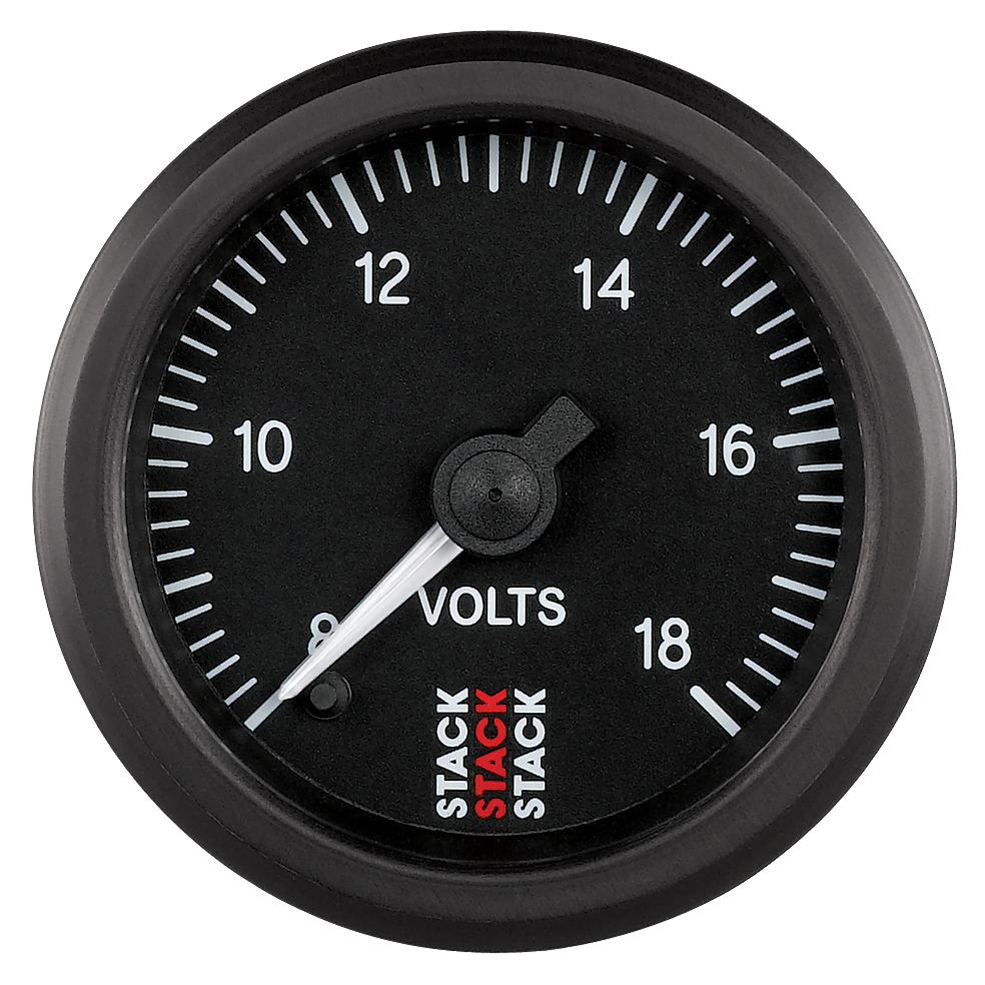
3. Battery voltage gauge
Found on many vehicles both as a factory-fitted item and aftermarket addition. It allows you to keep an eye on your alternator charging rate.
Why do I need a battery voltage gauge?
A battery level gauge enables you to ensure the car’s charging circuit is operating correctly. It’s not uncommon for alternators to stop working when exposed to excessive heat or vibration.
What to look for:
This varies between different cars and manufacturers, but generally the alternator needs to maintain a regulated charging voltage of approximately 14volts. If it’s producing more than 15volts or less than 13volts there’s usually a problem and you need to be aware.
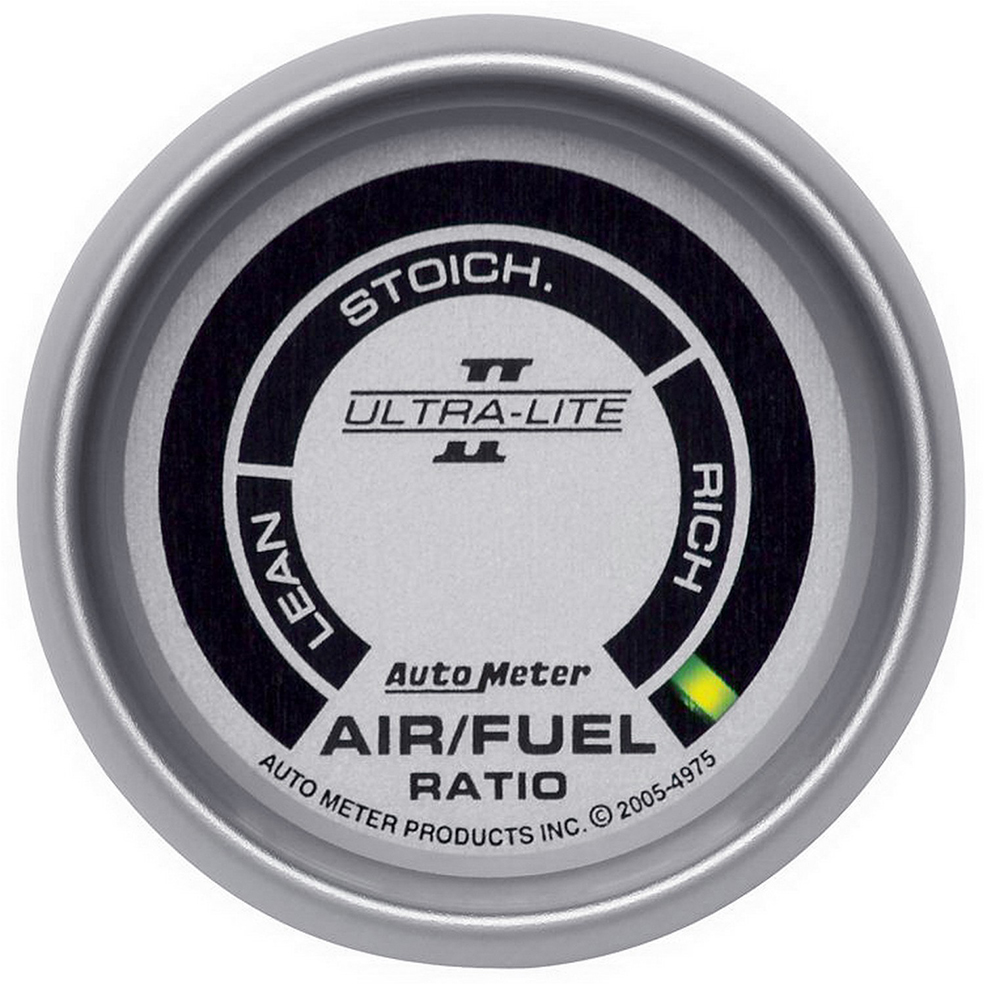
4. Air/fuel ratio gauge
AFR (Air/Fuel Ratio) is the measurement used to establish the ratio between the air and fuel going into the engine. A Lambda sensor monitors the exhaust gases and provides readings to a gauge.
Why do I an air/fuel ratio gauge?
An AFR gauge is a great way to know how safe your engine is running, confirming whether fuelling is lean, rich or safe.
What to look for:
Your tuner will advise you of your required under load AFR. However, 11.5-12.0:1 is deemed ‘safe’ for forced induction vehicles, 12.0-12.6:1 or leaner for N/A vehicles. 14.7:1 is stoichiometric, where the most chemically efficient burn occurs, also known as ‘Lambda 1.00’. This is the target mixture for idling and low-load cruising on modern vehicles, as this is the least poisonous mixture for a catalyst.
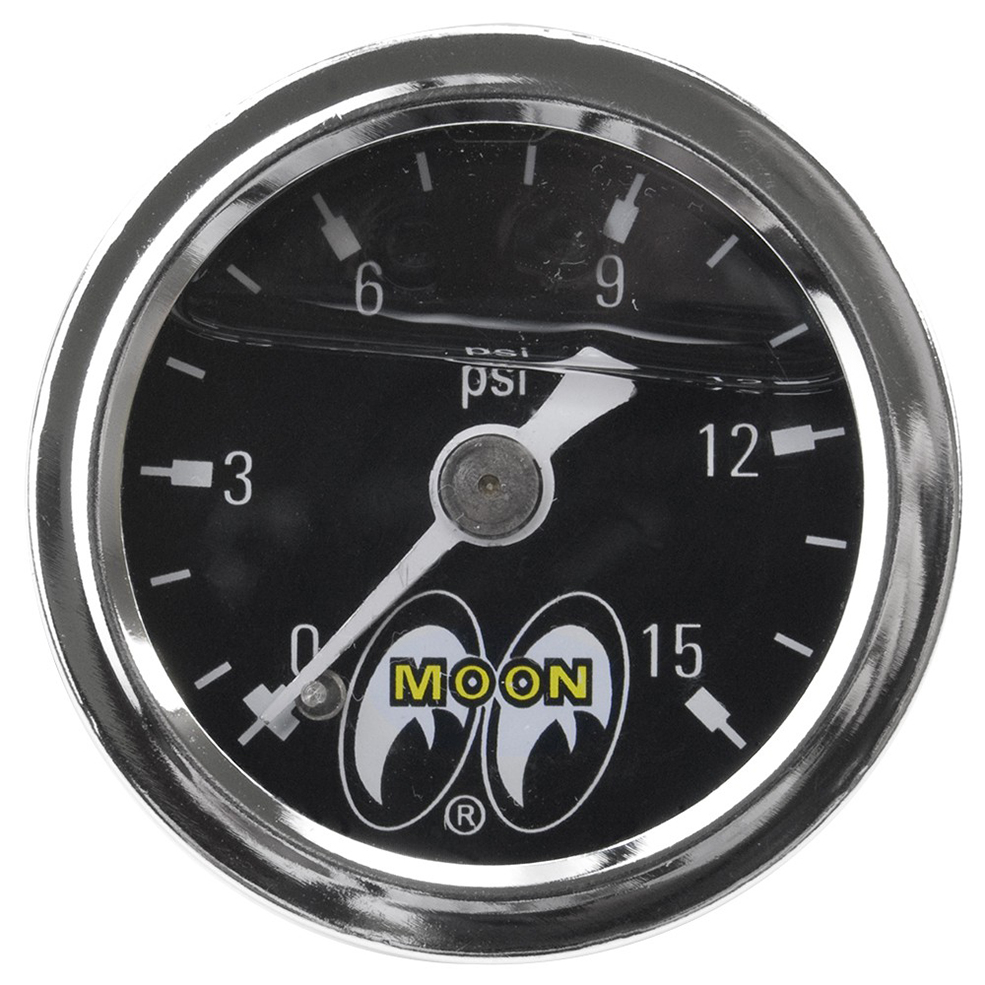
5. Fuel pressure gauge
Usually found in track and race cars, fuel pressure gauges are an addition for those who want to see their fuel supply is working.
Why do I need a fuel pressure gauge?
It enables you to ensure your fuel injectors are being supplied with fuel at the right pressure, allowing you to spot a failing fuel pump or a leaking line early. Most forced induction cars rely on the fuel pressure to rise in relation to the boost pressure to ensure suitable fuel delivery. A fuel pressure gauge enables you to check the base fuel pressure is correct and that the required rise in pressure is occurring.
What should I look for?
First, you need to check that your base fuel pressure is correct. Your tuner will be able to confirm what pressure the vehicle/regulator should be running and this is normally set at atmospheric pressure – that is, with the reference pipe disconnected.
You should see the fuel pressure reduce with the vehicle at idle and a vacuum depression present in the inlet manifold. When on boost, you ought to see the fuel pressure rise in relation to the boost pressure, normally at a 1:1 ratio. So, for every 10psi of boost pressure, you should see another 10psi of fuel pressure.
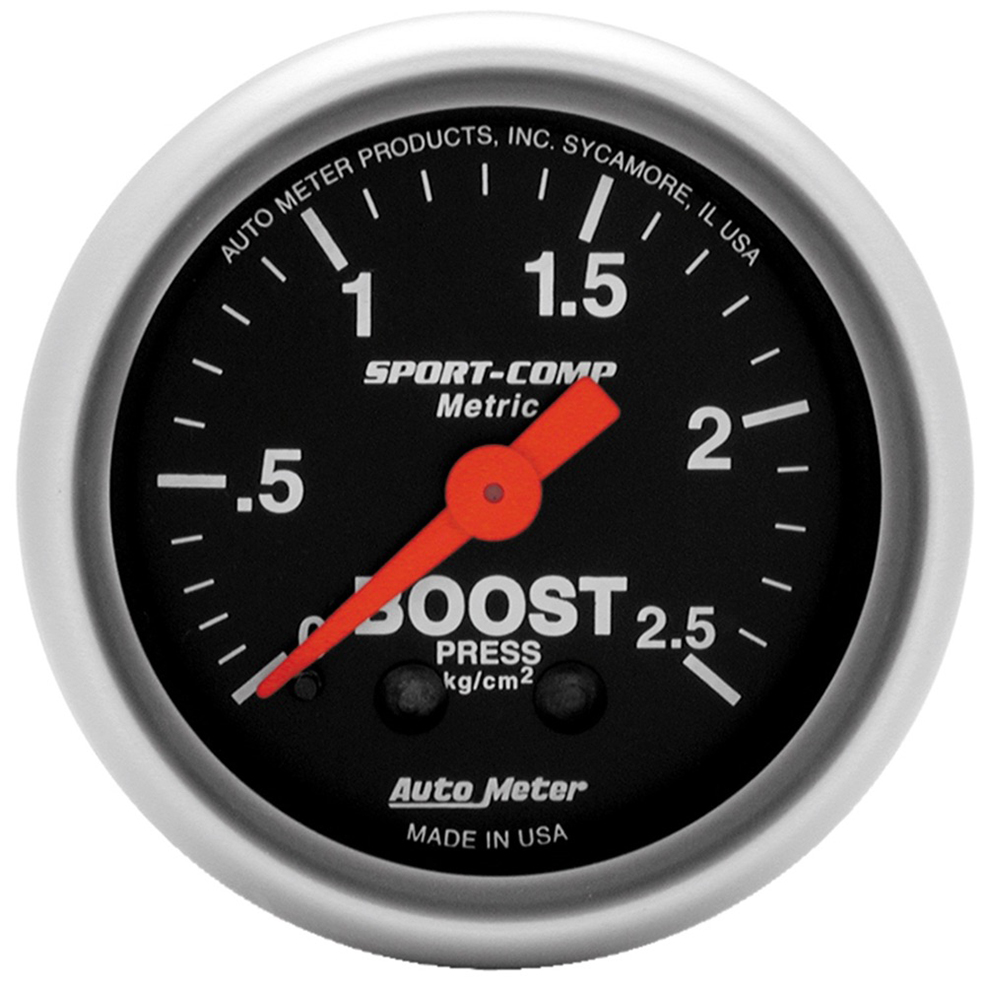
6. Boost gauge
The most common gauge found in forced induction performance cars. It provides an indication of how much pressure is being generated by the turbo or supercharger. Most boost gauges also allow you to measure the vacuum present in the inlet manifold when the throttle is shut.
Why do I need a boost gauge?
It tells you whether your turbo/ supercharger is making the correct boost pressure and confirm that it’s making its way into your inlet manifold.
What to look for:
Your tuner will advise you as to what the appropriate peak and hold boost pressure values are for your vehicle. Look for abnormalities in these values. If the vehicle is under-boosting performance will be affected, while over-boosting can lean the fuelling out. Vacuum readings will vary depending on your head porting and cam selection, but abnormalities should be easy to spot.
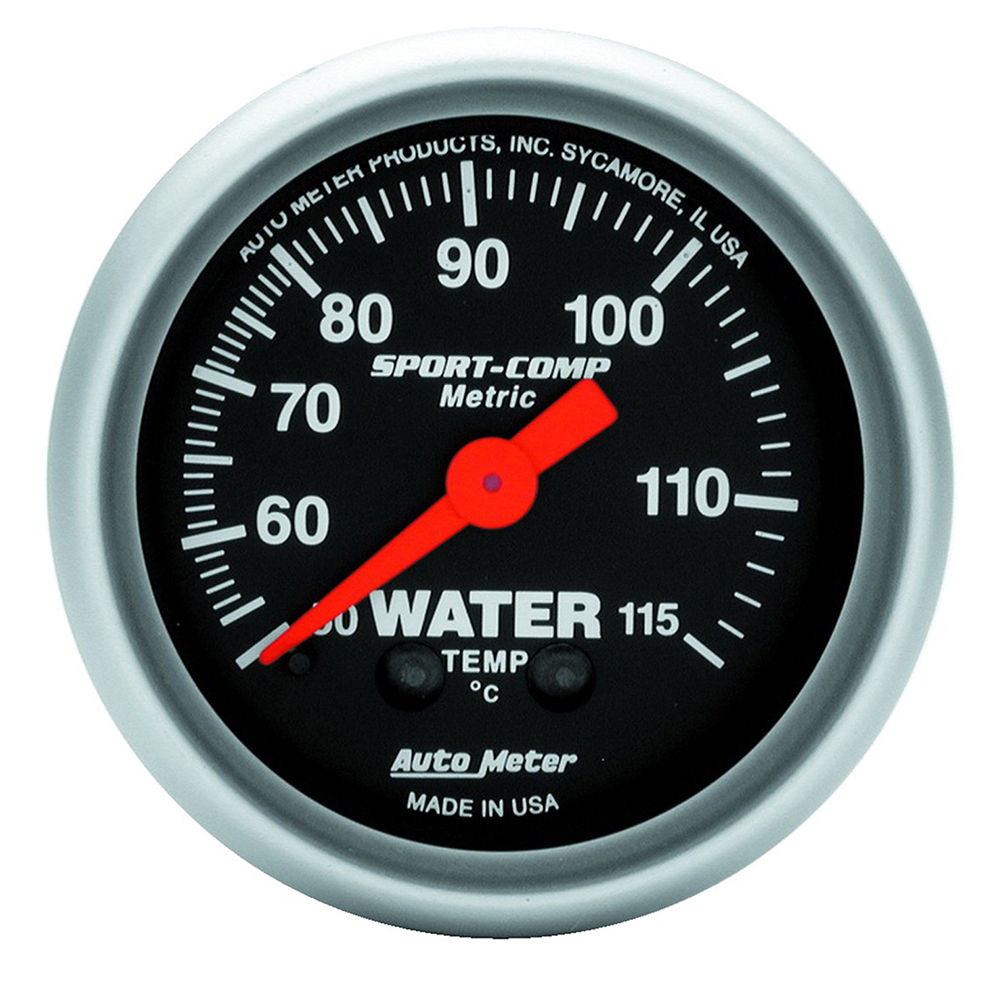
7. Water temperature gauge
The water temperature gauge is commonly fitted to road cars. It’s one of the simplest methods of determining whether your car has a potential problem caused by overheating.
Why do I need a water temperature gauge?
Water temperature is a key element in how safely your engine is running, and if the water temperature is rising then elements of your engine are at increased risk. The head gasket is a part which commonly fails during overheating.
What to look for:
Normal operating temperatures are around 80-90°C. Some vehicles run a little hotter than this, but the key is to identify your normal operating temperature and watch out to see if it rises.
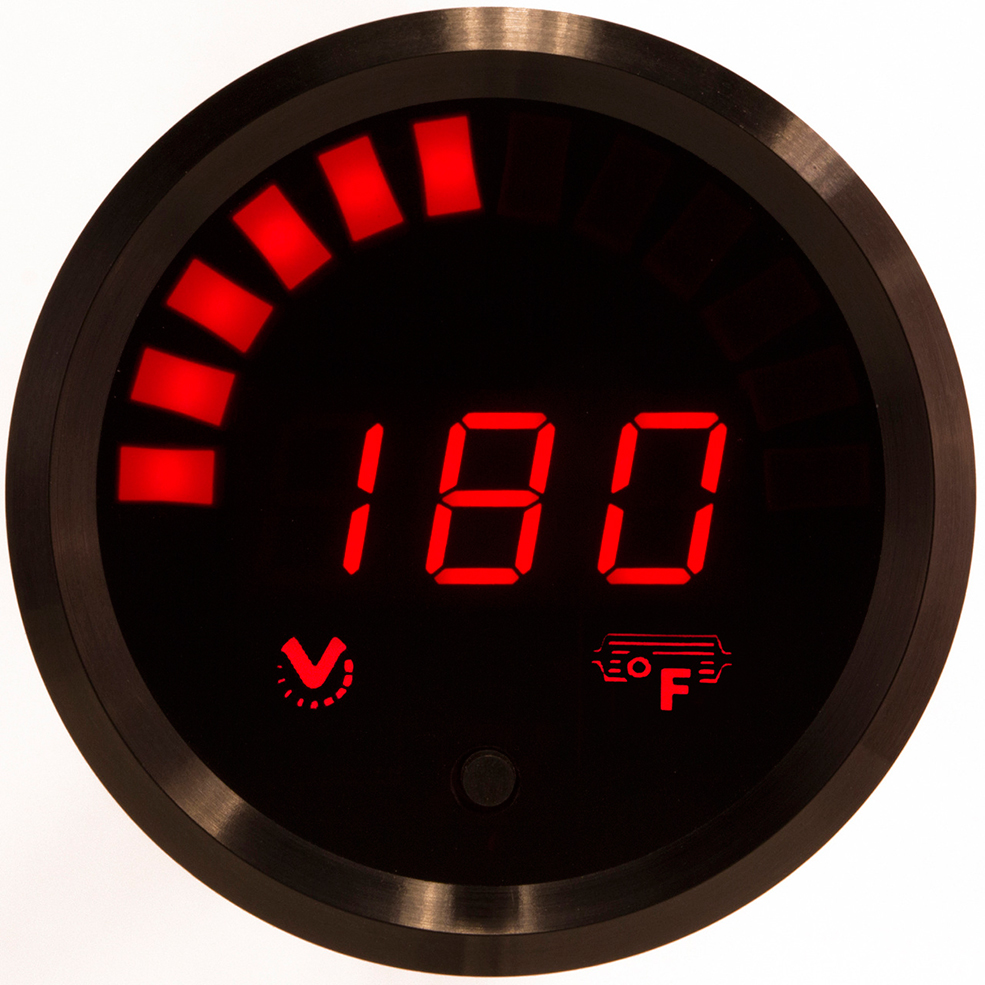
8. Air temperature gauge
Another gauge that’s common among forced induction vehicles. It’s fine having all that boost but do you know how hot your engine is?
Why do I need an air temperature gauge?
A key to getting more power out of your engine is to get more oxygen into it. If the air going in is hot, its oxygen content is reduced. At best, hot air will reduce power, at worst it can lead to detonation. An air temp gauge will let you see how hot or cold the air entering your engine is.
What to look for:
Air temperature should be below 40°C to ensure good oxygen content – below this shows an efficient air charge temp cooling system. High air temperatures can lead to detonation, and if you are seeing temperatures above 60°C, investigate alternative cooling and airflow options.
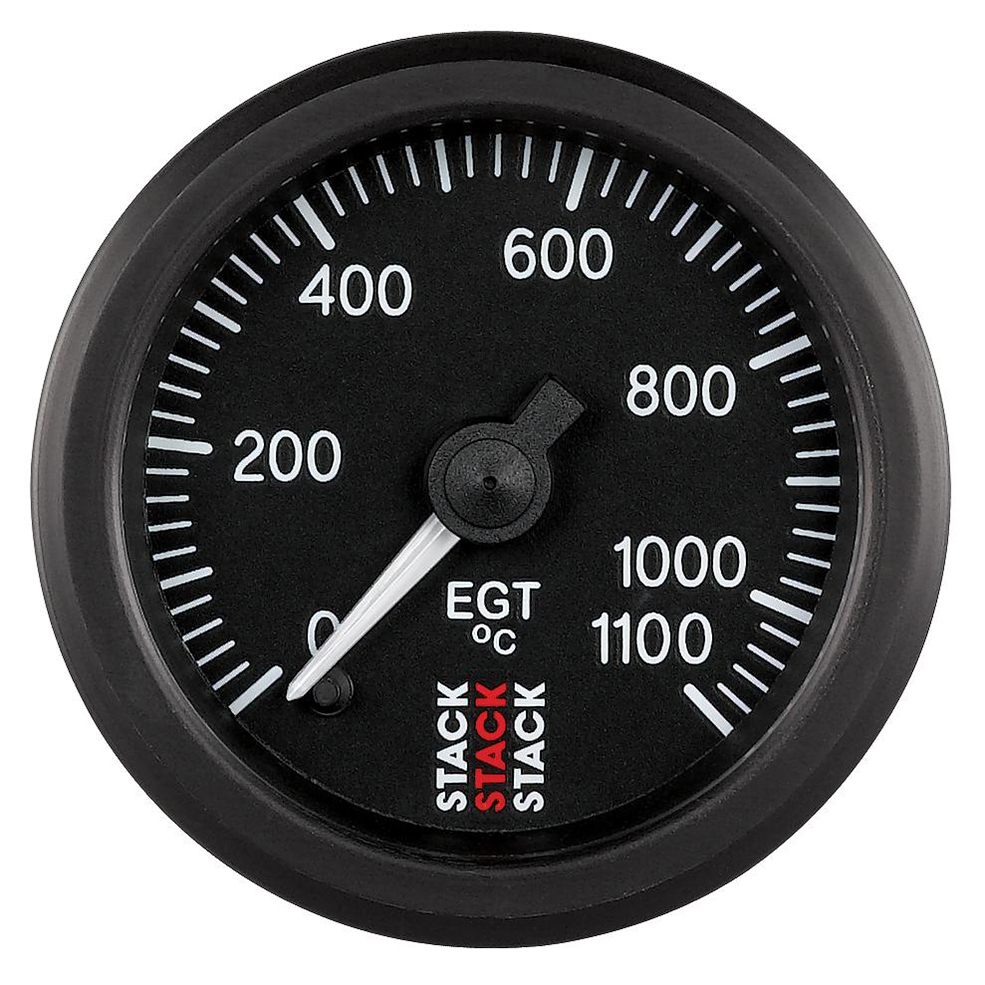
9. Exhaust gas temperature gauge
As you might have guessed from the name, this gives an insight into how hot the gases are in your exhaust system. These gauges are mainly found in track-focused vehicles, but shouldn’t be excluded from road cars.
Why do I need an exhaust gas temperature gauge?
An EGT gauge will allow you to see whether excessive heat is posing a risk to your engine. In addition, if you’re running race fuel with lead
content then there’s a high risk of damaging or even destroying Lambda sensors. As such, EGT gauges are the only way to know exactly what is going on, both for your tuner and you.
What to look for:
Typically, on a turbocharged vehicle around 900°C is safe when measured before the turbocharger. If you do choose to measure after the turbo, then the gases will have cooled a little and will normally be in the 800-850°C region.
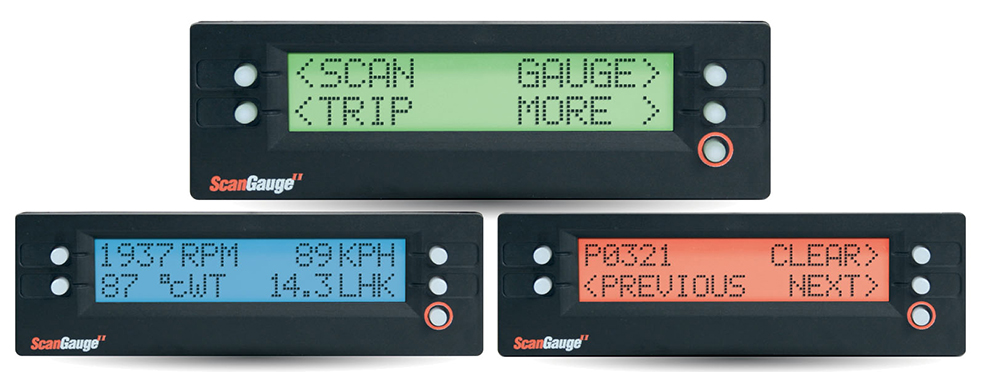
10. OBD based monitor
There is a data stream present in most ECU-controlled fuel injection vehicles produced after the mid to late-’80s. It’s more advanced in some vehicles than others and the more modern the vehicle, the more data can be accessed.
OBD-based data stream monitors check the information coming from the ECU and display it on a single screen. There are also now full digital dashes that interrogate the RS232 or CAN (Controlled Area Network) data streams on both factory and aftermarket ECUs. Alternatively, there are display gauges that simply
plug into the OBD (On Board Diagnostic) port, such as the VI Monitor (see next page).
Why do I need an OBD based monitor?
A gauge of this type will normally allow you to see RPM, MAP sensor readings, air temperature, water temperature, throttle position, injection duty, ignition advance and more. As you can imagine, to see all of this in any other way would require a huge amount of individual gauges on your dash. Keeping an eye on this information will allow quick diagnosis of faults. Some of these devices even report fault codes to you.
What to look for:
Every vehicle will run differently, the main thing to look for with this type of monitor is repeatability and consistency. After a period
of familiarising yourself with temperatures/values, you should be able to easily spot something out of the ordinary.
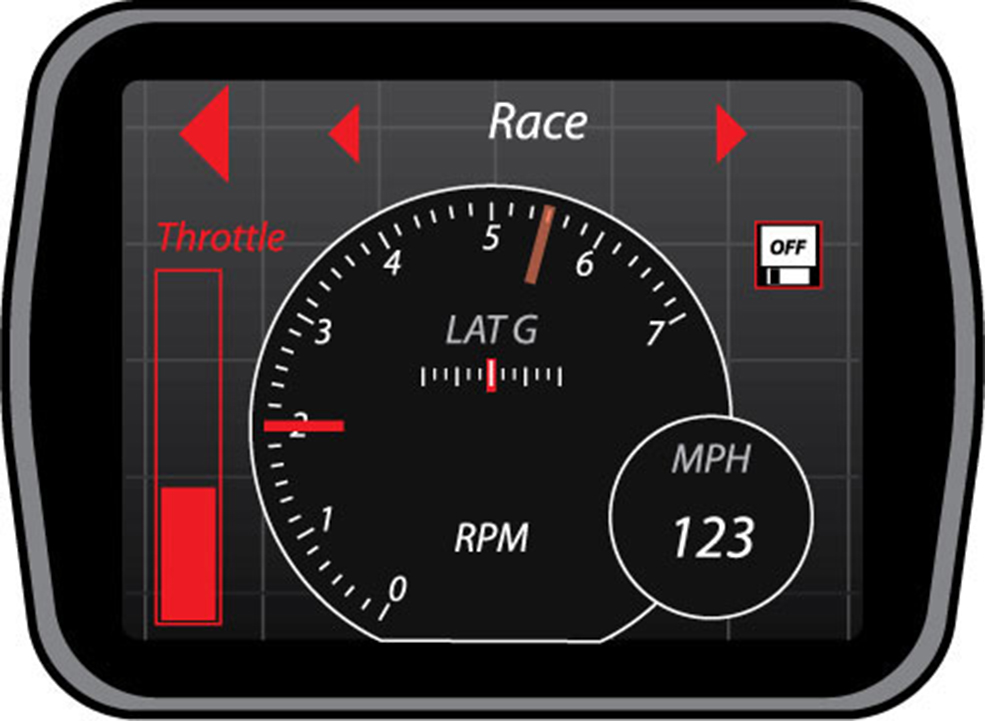
11. VI Monitor
The VI Monitor connects to your car via the OBD-II port and provides a range of live-feed information to help you keep your engine running sweetly. On top of that, the unit offers a wide selection of performance, data logging and fault code-based information in a neat screen-mounted package.
Why do I need a VI Monitor?
The VI Monitor allows real-time monitoring of up to 15 different engine parameters on three different gauges. Aside from the usual things you’d expect, you also get a three-axis G sensor, data logging, lap timer, built-in performance testing for both acceleration and braking, and fault code diagnostics.
What to look for:
One of the benefits to the VI Monitor is its ability to display fault codes – so check for these initially. Aside from that, get used to the figures the monitor gives and look out for any variations in them.

